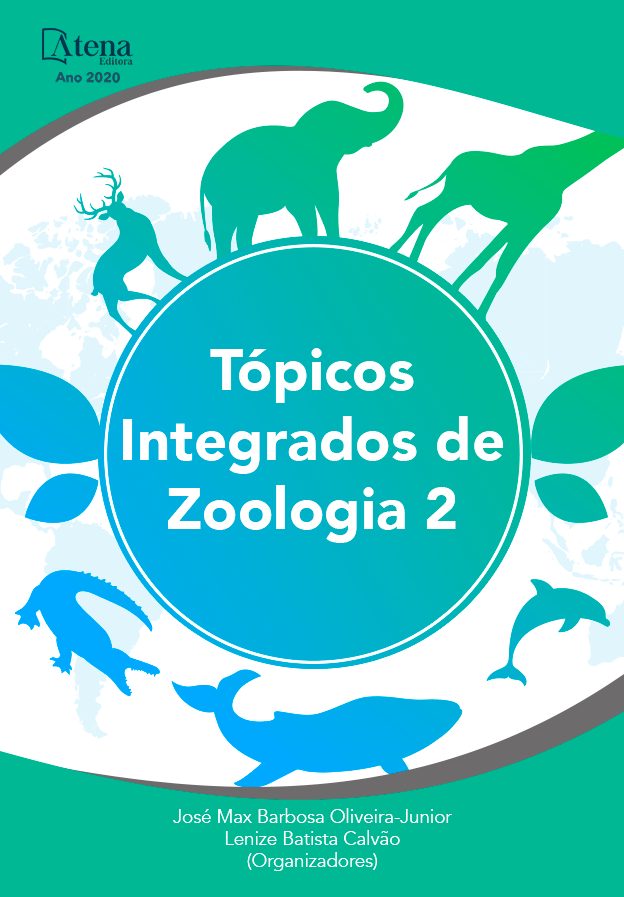
A CONTRIBUIÇÃO DA COLEÇÃO ENTOMOLÓGICA DA RESERVA NATURAL VALE PARA ODONATA (INSECTA)
As libélulas e donzelinhas (Odonata) são insetos predadores que necessitam de água para se reproduzirem. Os machos, quando sexualmente maduros, procuram viver próximo dos ambientes aquáticos, enquanto as fêmeas visitam as águas geralmente para a realização da cópula (acasalamento) e postura (liberação dos ovos). As coleções biológicas são fontes importantes de informações. Para que as coleções possam, por exemplo, efetivamente contribuir com a construção e atualização das listas de espécies ameaçadas de extinção, os exemplares nelas depositados precisam estar identificados em nível de espécie e seus dados organizados em um livro tombo digital. Esse trabalho teve como objetivo analisar as informações disponíveis no livro tombo da Reserva Natural Vale (RNV) sobre a ordem Odonata. Nós encontramos 200 exemplares de Odonata, sendo que 18 (9%) são Aeshnidae, sete (3,5%) são Calopterygidae, 15 (7,5%) são Coenagrionidae, um (0,5%) são Dicteriadidae, 129 (64,5%) são Libellulidae, quatro (2%) são Heteragrionidae e 26 são (13%) exemplares sem qualquer identificação. Considerando que não se tem a informação do local de ocorrência para 45 (21%) das espécies registradas no Espírito Santo (Brasil), identificar todos os exemplares e realizar um levantamento específico para Odonata na RNV poderão contribuir significativamente para o conhecimento sobre esse grupo de insetos e para a análise do risco de extinção, assim como para a conservação das espécies que ali habitam.
A CONTRIBUIÇÃO DA COLEÇÃO ENTOMOLÓGICA DA RESERVA NATURAL VALE PARA ODONATA (INSECTA)
-
DOI: 10.22533/at.ed.6242013112
-
Palavras-chave: conservação, libélulas, insetos, biodiversidade, Mata Atlântica
-
Keywords: conservation, dragonflies, insects, biodiversity, Atlantic Forest
-
Abstract:
The dragonflies and damselflies (Odonata) are predatory insects that need water to reproduce. The males, sexually active, seek to live near to aquatic environments, and females visit the water, usually for copulation (mating) and laying (egg release). Biological collections are important sources of information. So that collections can, for example, effectively contribute to the construction and updating of the lists of Threatened Species, the specimens deposited therein must be identified at the species level and their data organized in a digital repository of records. This work aims to analyze the information available in the repository of records of the Reserva Natural Vale (RNV) about the Order Odonata. We found 200 specimens of Odonata, of which 18 (9%) are Aeshnidae, seven (3.5%) are Calopterygidae, 15 (7.5%) are Coenagrionidae, one (0.5%) are Dicteriadidae, 129 (64,5%) are Libellulidae, four (2%) are Heteragrionidae and 26 are (13%) specimens without any identification. Considering that 45 (21%) of the species registered in Espírito Santo (Brazil) do not have information about the locality of occurrence, identifying all the specimens and performing a biological survey for Odonata in the RNV may contribute significantly to the knowledge about this group of insects and to the analysis of the risk of extinction, as well as to the conservation of the species that inhabit there.
-
Número de páginas: 9
- Wesley Dondoni Colombo
- Karina Schmidt Furieri


